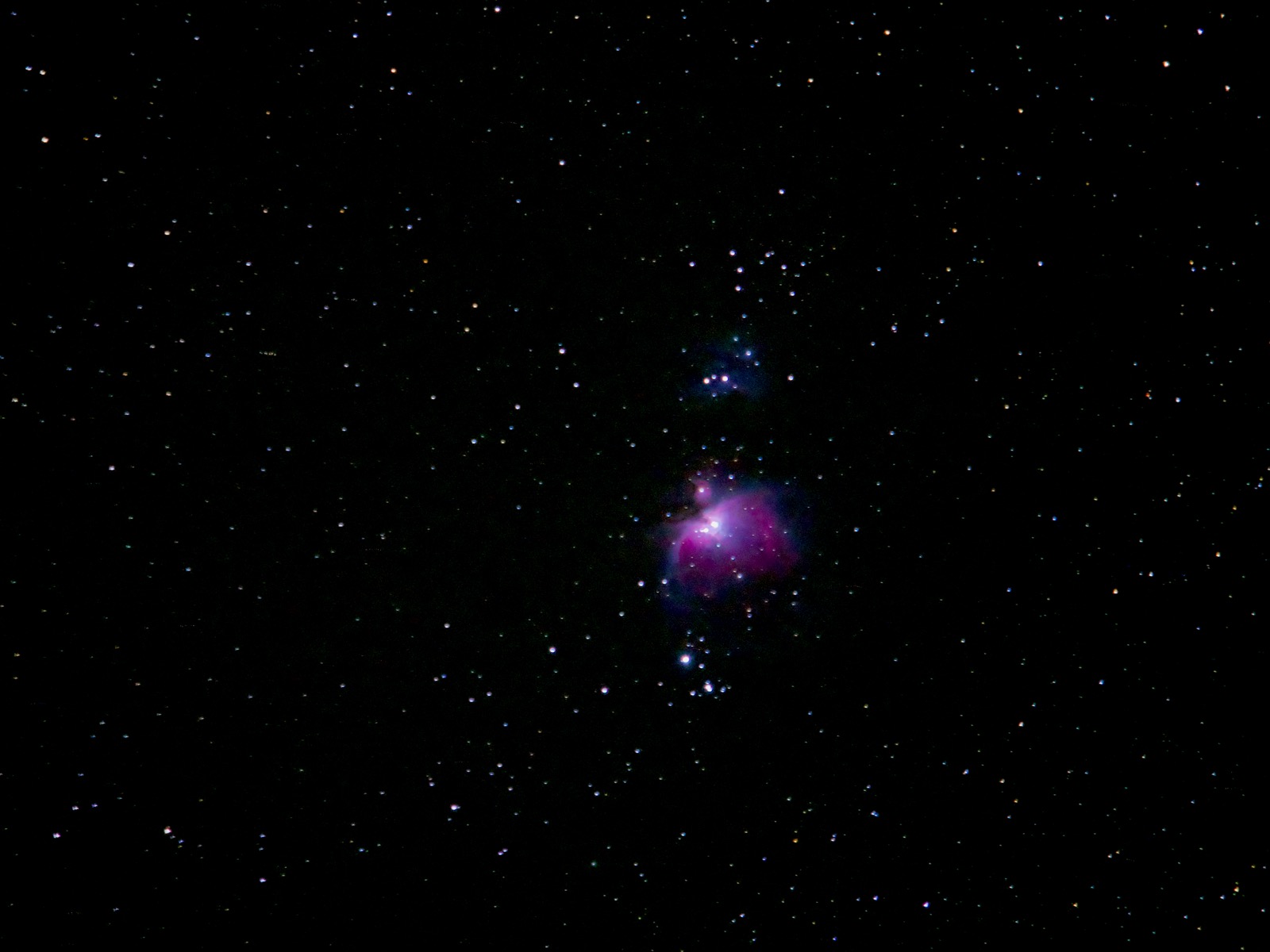
I went over to visit with a friend last night and we looked at Jupiter through his large Meade Schmidt-Cassegrain telescope. Some clouds, mostly clear. The seeing wasn't ideal, but got better as the night went on. I could make out two bands and four moons, but no red spot.
I'd brought over a couple of cameras and a tripod and I tried to get a shot of the Orion Nebula. I got a few, but nothing was I really pleased with. I was trying to use the OM-1 with handheld high-resolution shooting from the tripod. I kept getting failures.
So before I turned in tonight, I looked outside and the sky was clear so I set up on our back patio.
I'm still not thrilled with this result, but I had a little better luck getting successful HHHR shots. This is a crop of a 50MP RAW. PhotoPills said my slowest shutter speed for 300mm effective focal length was .7s, and this is nearly double that at 1.3s. Rule of 500 suggests I might have gotten away with 2s, but I don't think so.
I think the longer exposure (1.3s) stretches the stars a bit and gives the processor more data to align, though it doesn't seem to be doing it exceptionally well. I think folks have more success at shorter focal lengths, but some have done well with longer ones.
I had trouble with Starry Sky AF last night, so I did a little homework on that today. I enlarged the AF target and had much more success in the sense that the camera reported it had achieved focus. I don't know if these blobs are artifacts of the stacking, or if focus was actually off. I need to play around with it some more, and I was just trying to see what I could do quickly tonight.
All in all, I'm happy that I seem to be making progress. I've got a little bit of sky I can see out back. (My friend has a much better view, and darker I think.) I'll keep trying.
Originally posted at Nice Marmot 22:19 Sunday, 4 February 2024